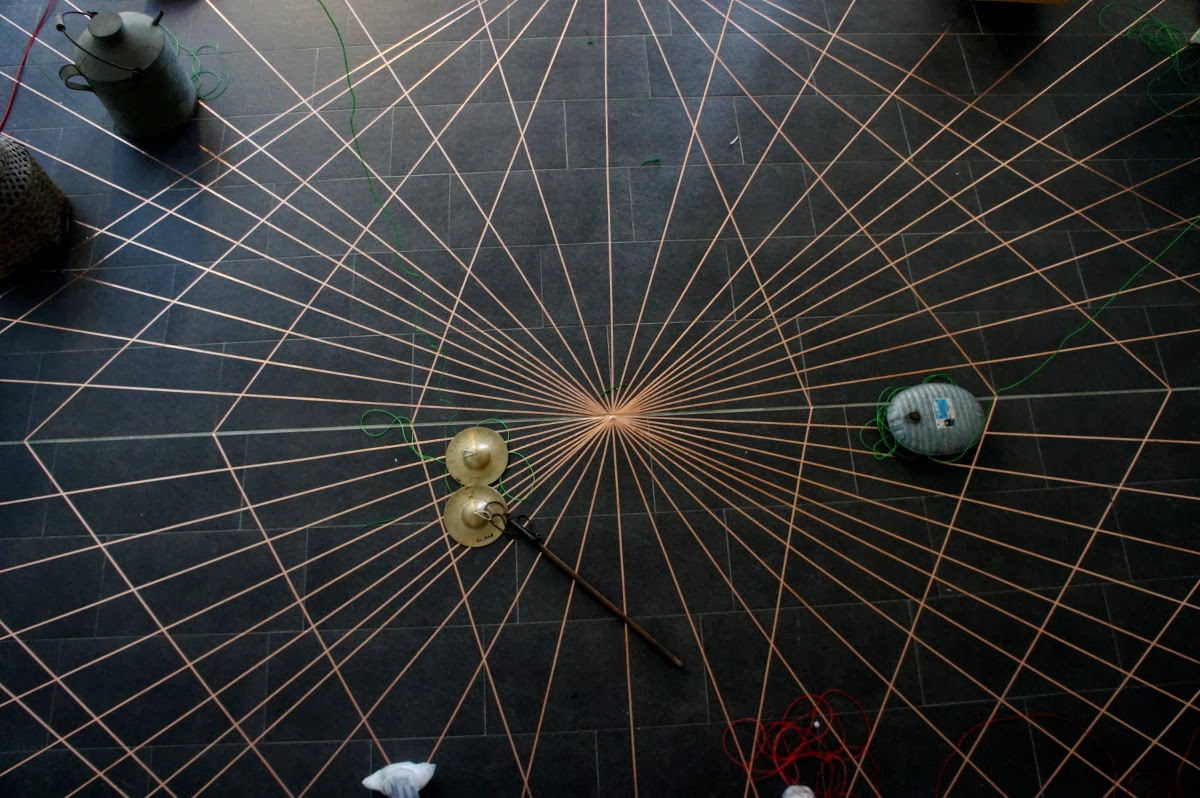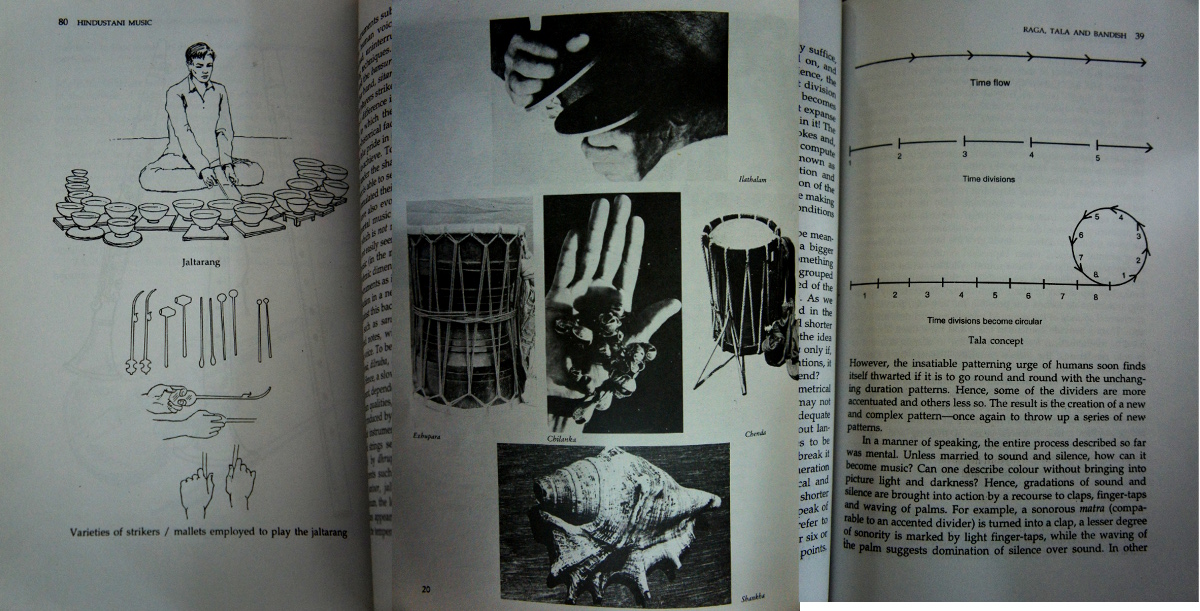Table is a new from publication
(True Belief) edited by
Dell Stewart. With contributions from
Margaux Williamson, Sarah Weston, Amy Vuleta,
Anna Varendorff, Manon Van Kouswijk, Meredith Turnbull,
Nat Thomas, Dell Stewart, Tai Snaith, Dylan Martorell, Rachael Hooper, Kelly Fliedner, Nic Dowse, Adam Cruickshank. 201
96 pages / full colour / perfect bound / soft cover / dust jacke
ISBN 978-0-9871705-7-6
Dylan Martorell, Table top
Dylan Martorell’s tables, and the objects upon them, engage with a world and a language familiar to all of us, borrowing from the sphere of objects necessary to, or found within, the home. They are the objects we live with and use everyday: succulents in pots, rocks, sand and rope from the garden; bananas, potatoes, corn cobs and kernels, and other foods; bowls, cups, empty tins and cans, plastic trays, containers, vases and wine goblets, as well as other articles from the kitchen. These sit next to, below or on top of objects (perhaps more usually) used in the creation of art, music and performance: speakers, musical instruments (intact and dismantled), amplifiers, earthing wires, circuit boards, usb sticks, stationary, beads and clay. Woven amid all of these formations are pieces of discarded rubbish, waste material, plastic, detritus and refuse from both the home and the studio.
Self-sufficient and contained, these are fleeting assemblages and one off conglomerations formed for an exhibition or event, chained to that time and that space. For one moment Martorell’s collected objects, come together as microcosms atop make shift counters and card-tables. They are repurposed and ready to be played, to generate sounds and to create music. Site-specific, these works, such as the Kochi studio table top (2015), engage with their surroundings, by scavenging objects from, or evoking the histories of them (in this instance, narratives of past residents and of past uses as a site of international spice trade). After, the works are pulled apart, dismantled and released back into the world for another arrangement at a later date.
Martorell’s tables suggest both functionality and contemplation. The nature of his assemblage and the act of bringing together is transformative. A functional object, such as a glass used for drinking, becomes a vessel for the creation of reverberating sound, while in conjunction with other glass objects, becomes a sculpture that reflects light, gathering a formal aesthetic appeal. Here the table becomes the point of transformation, whereby objects that are intended to be played are also to be looked at; objects to be heard are also to be touched. There is a collapsing of distinction from object to performance, from sculpture to music, and further slippage back and between the two as the work is activated and deactivated by utility and performance.
Within the context of the exhibition space, Martorell’s works are often self generating, kinetic assemblages that create acoustics riffing off the natural ambiance of the room, activated by the audience, or are simply left idle—as idols—for the duration of opening hours until they are next animated by some event or performance. Martorell creates spaces that are sites of flux, where the potentiality of a work is unclear but present. If these inactive works were encountered within the space of a gallery, or as presented here within these pages, as mere sculptural documentation, the audience will likely still understand that by virtue of their work-bench nature, their intimate aesthetic and their inclusions of objects like speakers and conductors, that they have the potentiality for performance.
Through this potentiality Martorell’s tables become delineated stages and receptacles of latent energy. Like a dinner or kitchen table, through the ritual of its daily activation, the works take on an aura that is more than the sum of their parts. Just as the kitchen table is activated at regular daily intervals with conversation and action, these table tops become platforms for the process of ritual and storytelling. The kitchen table is the site where we habitually return to consume, converse and therefor narrativise our existence. And so too, do Martorell’s tables demand a certain amount of time in order to create sounds and synchronise with their surroundings, becoming a space for the audience to connect and project through either expected or recently consumed performances. They become a space where the audience encounters bordered events, creating moments of ‘off’ and ‘on’, connecting to the circadian narratives of home and life.
If the table is a border and a stage, it is also a frame. And as a title can effect the reading of a work, so too the table as a frame revises the collection upon it. Here the table becomes a necessary agent or focal-point within the collaboration, or conversation between artist, audience and object. Not so much in the definition of their use, but perhaps as a useful way of telling us what they are not: ‘these glasses stacked here on this table are not for ‘drinking’, they are for ‘playing’’; or, ‘this piece of tube and concrete is not merely a forgotten remnant, but part of this orchestra of objects’. By virtue of its boundaries, thetable facilitates the conversation, anchoring otherwise floating objects. Likewise, perhaps Martorell’s practice, which includes many ongoing and one-off collaborative arrangements, requires the table for conversation—to draw out or define the terms of those collaborations.
These modes of bordering, staging and framing are not to undermine the complexity and often messiness of Martorell’s tables, which perhaps reflect the frenetic environment of the home (or at least some homes) as a place that juggle the needs of multiple family members. Martorell’s works evoke these multipurpose spaces that slip between utility and work, leisure and relaxation, while evoking a history of art within the domestic sphere. They function as cultural criticism and depict how the creative and poetic image can gather all the complexity and chaos of a historical moment.However there is rhythm to their chaos, an internal logic to the formal and aesthetic decisions of each assemblage, as well as a particular politic expressed through the selection of such domestic, up-cycled and scavenged objects that finds confluence upon the table top. The table tops becomes a political commitment that is not indifferent to their aesthetic, but one that makes comment upon the disenfranchisation of art made within the home (predominantly by women), of climate change and the environment, and of the movement and circulation of people and materials around the world.
Through Martorell’s interest in the politics of collaboration and recycling, environmental sustainability and cultural exchange, there is a considered understanding of the complexity of labor. Present is the knowledge that in the creation of an art object, there is a history of practice and making that become the tools of that design, and for Martorell that is expressed not just in the language of selected found objects and the history of the readymade, but in the posture, performance and action of the artist in relation to the object, with an interest in narratives that level hierarchies that relegate the domestic as inferior, and, in the ethos of recycling commercial products and materials. Here, sedimented within the image created on the table top are the details of those various histories of politics and art.
more details here
http://www.dellstewart.net/shop/table






















































